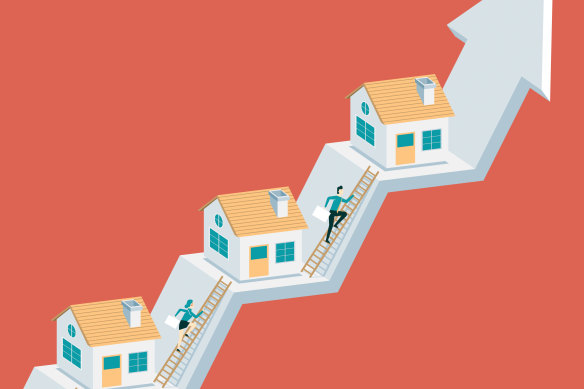Reverse mortgages on the rise among cash-strapped seniors
Reverse mortgages are on the rise as older Australians look to supplement their income by tapping into the value of their home.
The loans, available from the federal government and a few private lenders, accrue compound interest and do not require repayments until the home is sold, or the owner enters aged care or dies.

Reverse mortgages have increased substantially as equity rich but cash poor seniors seek extra income.Credit: Getty
Demand for the federal government’s Home Equity Access Scheme, which allows those over 67 to receive fortnightly payments capped at 150 per cent of the pension as well as two modest lump sum advances each year, has skyrocketed.
There were 12,115 participants in the scheme in March, compared to 768 in June 2019.
The total outstanding loan balance on the scheme is now $340.7 million, more than 10 times what it was five years ago.
The scheme underwent reform in 2019 to increase eligibility, reducing its annual interest rate from 5.25 per cent in 2020 to 3.95 per cent in 2022.
Minister for Social Services Amanda Rishworth said the scheme’s growth was expected.
“It provides a flexible and secure way for them to supplement their retirement income,” she said.
“Pension arrangements aim to strike a balance between assisting those who need it most, while also ensuring sustainability into the future in the context of an ageing population.”
UNSW School of Risk and Actuarial Studies Emeritus Professor Michael Sherris said reverse mortgages were a good option for those looking to supplement their retirement, but didn’t come without risks.
“The big question is, when do you want to eat your house? Most people think of house equity as insuring against residential care costs,” he said.
“If you don’t have much equity left, you risk relying solely on the government and entering residential care, instead of paying for at-home care.”
Sherris said the government’s 3.95 per cent interest rate was “generous”, but had low fortnightly payments.
“It’s cost-effective, but they’re cautious.”
Big banks, including the Commonwealth Bank, Westpac and Macquarie Bank withdrew reverse mortgage products following the 2017 royal commission into banking. However, some smaller lenders offer the loans without the government’s payment restrictions, charging interest of around 10 per cent.
“They take on the risk if the loan goes bad, and have to wait years to get their interest back,” Sherris said.
Heartland Bank saw an 18 per cent increase in new reverse mortgages in 2022-23. It charges 9.75 per cent interest, compounding annually.
The bank’s chief compliance and sustainability officer, Sharon Yardley, said the average customer was 73 and paid off the loan in six years, using it to supplement their income, improve their homes and consolidate their debt.
“It’s mostly people who are not ready to sell their home, but want to stay in it for a bit longer and clear their other debts,” she said.
Yardley said there was a risk to customers if their home value didn’t increase and the sale of their home didn’t cover the loan, but there had only been eight negative equity cases in the bank’s history.
Expert tips on how to save, invest and make the most of your money delivered to your inbox every Sunday. Sign up here for our Real Money newsletter.